PDF of this article (419 KB)
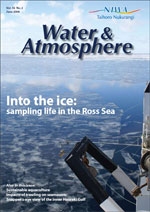
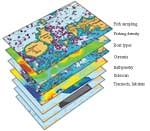

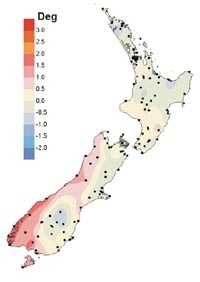

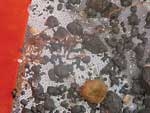
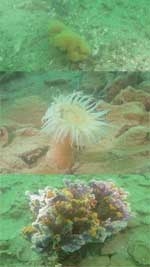
Mark Morrison, Ude Shankar, Darren Parsons, Glen Carbines, and Bruce Hartill describe a multilayered investigation into fish and their habitat.
Marine recreational fishing is a passion for many New Zealanders, providing both food and entertainment. It also generates significant economic activity, including the purchase of fishing gear, bait, boats, fuel, and holiday accommodation. However, increasing levels of recreational fishing have direct and indirect effects on marinefish populations. The most obvious direct effect is that more fish are caught. ‘Indirect’ fishing effects include anchor, chain, and gear damage to the seafloor, and changes to the food web caused by adding food (the bait) and removing higher-level predators (the fish). In addition to actual fishing, other humaninduced pressures on coastal fisheries include increasing sedimentation and water turbidities, and loss or degradation of important biogenic (living) nursery habitats, such as seagrass meadows, horse-mussel beds, and sponge gardens. The emerging challenge for resource management is to maintain productive and healthy fisheries by looking after the coastal ecosystems that effectively underpin them. This is known as ‘ecosystem–based management’.
A model fishery
The inner Hauraki Gulf snapper fishery is a logical place to start looking at the interactions between recreational fishing and marine ecosystems. Ministry of Fisheries (MFish) figures for December 2004–November 2005 estimate a recreational harvest of 674 tonnes of snapper from the inner Gulf, or about 28% of all snapper caught recreationally between North Cape and East Cape. This means that around 761 000 snapper, weighing on average 0.84 kg each, are caught each year in the inner Hauraki Gulf by recreational fishing.
Knowing this, we focused our FRST-funded ‘Marine Recreation’ research programme in the inner Gulf to better understand the inter-relationships between the recreational snapper fishery, snapper populations, and the underlying seafloor habitats, including the invertebrate animals living there. We divided the inner Gulf into eleven zones representing areas of either higher recreational fishing catch (for example, Rangitoto, Motiuhe Channels) or lower catch (Bean Rock area, Tamaki Strait). Then we began a range of field projects to collect the data needed to ‘populate’ each of these eleven zones.
To manage these datasets, we turned to a geographic information system (GIS) – a software programme designed to store, display, and analyse spatial data. We based RECFISH, our GIS database, on the Marine Data Model developed by NOAA (US National Oceanographic and Atmospheric Administration).
The range of data we have collected has been quite broad. In the following sections we describe some of these data, how we collected them, and what they mean.
Broad-scale habitat mapping
We used advanced mapping technologies (multi-beam, sidescan sonars) to map the seafloor bathymetry (contours) and texture, at very high resolution, in the middle part of the overall study area. From these data, we’re using software tools to identify seafloor features such as plateaus, holes, ridges, slopes, and channels. These tools use the same basic principles as those for producing land topographic maps, such as the ones you might use for tramping. Along with such ‘big’ features, we’ve also identified smaller habitat components, such as patch reefs, sand/shell waves (like dunes), and regions with lots of pits and mounds. Overall, this information lets us create broad-scale seafloor habitat maps. In the surrounding, unmapped area, we’ve used existing marine chart information. We’ve also used an Auckland Regional Council hydrological model for the Hauraki Gulf to predict tidal current speeds, providing an additional layer of habitat information.
Finer-scale seafloor habitat types
Mapping technologies such as sonar are good for identifying different physical elements of the seafloor, but they don’t tell you what the elements actually are, though an experienced operator can make a pretty good guess. They also cannot detect individual plants and animals on the seafloor, unlessthey are so dense that they literally form a living cover (for example, high-density beds of green-lipped mussels or horse mussels). We used a dropped underwater video (DUV) to determine what the different physical features from the remote mapping actually were – a process called ‘ground-truthing’ – and to count individual plants and animals of reasonable size. A DUV is a forward-facing video camera attached to a lead ‘torpedo’ with stabilising fins, that is towed along just above the seafloor. Small lasers attached to the DUV are aimed at the seafloor, with a 20-cm gap between them. This 20-cm scale-bar is captured in the video, so we can estimate the size of individual objects on the seafloor, such as fish.
We used the DUV to identify seafloor type and count animals living on the seafloor at more than 400 locations spread across the eleven zones. At each location, we towed the DUV along a line, or ‘transect’, for a distance of about 400 m, with a transect width of 0.5–2 m, depending on water clarity. Back at the office, we viewed each video transect and determined the seafloor type, such as mud, sand, shell grit, shell ‘armouring’, or rocky reef. At random points along each transect, we counted and measured all the biogenic habitats (horse mussels, sponges, sea-squirts, scallops, large dead shells), as well as physical features like ripples, pits, and burrows. These data are being used to describe what the different habitats are, what lives in them, and how this varies across the study area. Many of these features are potentially important components of ‘good’ snapper habitat.
Fishery catch-and-effort dynamics
We’re using survey techniques we developed in earlier work for MFish to estimate how many snapper (and other species) are caught, and at what sizes, in each of the eleven zones. Observers in small planes count the number of recreational boats fishing in each zone; on the same day, we interview fishers as they return to nearby boat-ramps, measure their fish catches, and ask questions such as how long they had fished that day. We ran these surveys on 45 randomly selected days throughout the year.
Snapper population dynamics
Previously, we discovered that snapper and other species can be counted during the night as they sleep on the seafloor, using either divers or DUV. For this programme we took advantage of this behaviour to estimate how many snapper, and at what sizes, were present in each of the zones, and how that changed through the year. From the 400+ DUV transects, we counted and measured every sleeping fish seen, a ‘catch’ of more than 2200 snapper, ranging from 2 to 75 cm in size. We also noted the habitat associated with each individual fish. From these observations we are quantifying what habitats snapper prefer, and how they vary across the survey area.
We also wanted to know more about snapper movement patterns, and how popular fishing areas, such as Rangitoto and Motiuhe Channels, were linked by snapper movement to other places that were much less fished, such as East CoastBays to Rakino, Tamaki Strait, north of Waiheke Island. To do this, we tagged snapper throughout our study site and in adjacent areas: around 9300 fish in the summer of 2006/07. At last count, more than 560 tags have been returned, revealing patterns ranging from strongly resident (less than a kilometre movement) to migratory (moving tens to hundreds of kilometres). The extremes of movement include a snapper recaught off the Hokianga Harbour, and another off Gisborne.
Snapper habitat usage
While snapper are found across all habitat types, their numbers and sizes vary considerably with bottom habitat type. To investigate possible reasons for this, we selected five locations, each containing a specific type of bottom habitat. These included the fine muds north of Rangitoto (known to fishers as the ‘worm beds’), sands, shell gravel, and shell-armoured seafloor (dog-cockles). At each location, we sampled both the benthos (invertebrate animals) and snapper (to see whatthey had been eating). From these data we are assessing what prey items snapper are targeting versus those that they are not, and how this relates back to the different kinds of seafloor habitats.
‘Derived’ spatial maps and models
With the various datasets described above, we’re creating new maps that incorporate multiple data sources. For instance, we’re working on fish–habitat suitability models, using data from DUV, remote sensing, and our current-speed model. We're also looking at the relationships between anchoring/fishing gear intensity and biogenic habitat densities on the seafloor, recorded across fishing intensity gradients (using DUV, drop cameras, and boat counts summed over time). These models will enable us to go to other places, rapidly assess the habitat features, and then predict the relative values of those places for fish and fishers, and likely threats to those values. Many places are under increasing environmental and human pressures, similar to the inner Hauraki Gulf; these include the Bay of Islands, Kaipara Harbour, Coromandel, and Tauranga, as well as more southern regions of New Zealand where recreational fisheries target colder-water species such as blue cod.
Fishing for answers
- Recreational fishing and other human activities are putting increasing pressure on coastal ecosystems.
- NIWA scientists are using a range of tools and techniques to study the interactions between snapper, recreational fishing, and seafloor habitats.
- Our findings about snapper in the Gulf will help in moving towards ecosystem-based fisheries management.
Further reading
Hartill, B.; Bian, R.; Armiger, H.; Vaughan, M.; Rush, N. (2007). Recreational marine harvest estimates of snapper, kahawai and kingfish in QMA 1 in 2004–05. New Zealand Fisheries Assessment Report 2007/26. 44 p.
Morrison, M.; Carbines, G. (2004). Let sleeping fish lie. Water & Atmosphere 12(2): 21.
Morrison, M.; Carbines, G. (2006). Estimating the abundance and size structure of an estuarine population of the sparid Pagrus auratus, using a towed camera during nocturnal periods of inactivity, and comparisons with conventional sampling techniques. Fisheries Research 82: 150–161.
Morrison, M., Taylor, R., Walker, J., & Parsons, D. (2007). Marine recreation and coastal ecosystems. Water & Atmosphere 15(2): 20–21.
Dr Mark Morrison, Dr Darren Parsons, and Bruce Hartill study fisheries ecology; they are based at NIWA in Auckland.Dr Ude Shankar is a GIS specialist based at NIWA in Christchurch. Dr Glen Carbines, formerly of NIWA, is now a fisheries scientist with Stock Monitoring Services Ltd.
The authors thank the Foundation for Research, Science & Technology for funding ‘Marine Recreation’ and DOC forfunding (and permitting) snapper tagging within Hauraki Gulf marine protected areas. MFish granted a special permit for the sampling and fish tagging in this study.
We are grateful to many people for their involvement with this programme, including colleagues at NIWA and at Leigh Marine Laboratory, University of Auckland, numerous boat ramp interviewers, the pilots of Christian Aviation, and the skippers and crews of the commercial long-line vessels. Finally, we thank all those many fishers at the ramp who kindly gave their time to answer questions about their fishing, and allowed us to measure their catches.
Teachers’ resource for NCEA Achievement Standards or Unit Standards: Biology Level 1 US6309, Level 2 US8925, AS90461, AS90769 Education for Sustainability Level 2 AS90811
